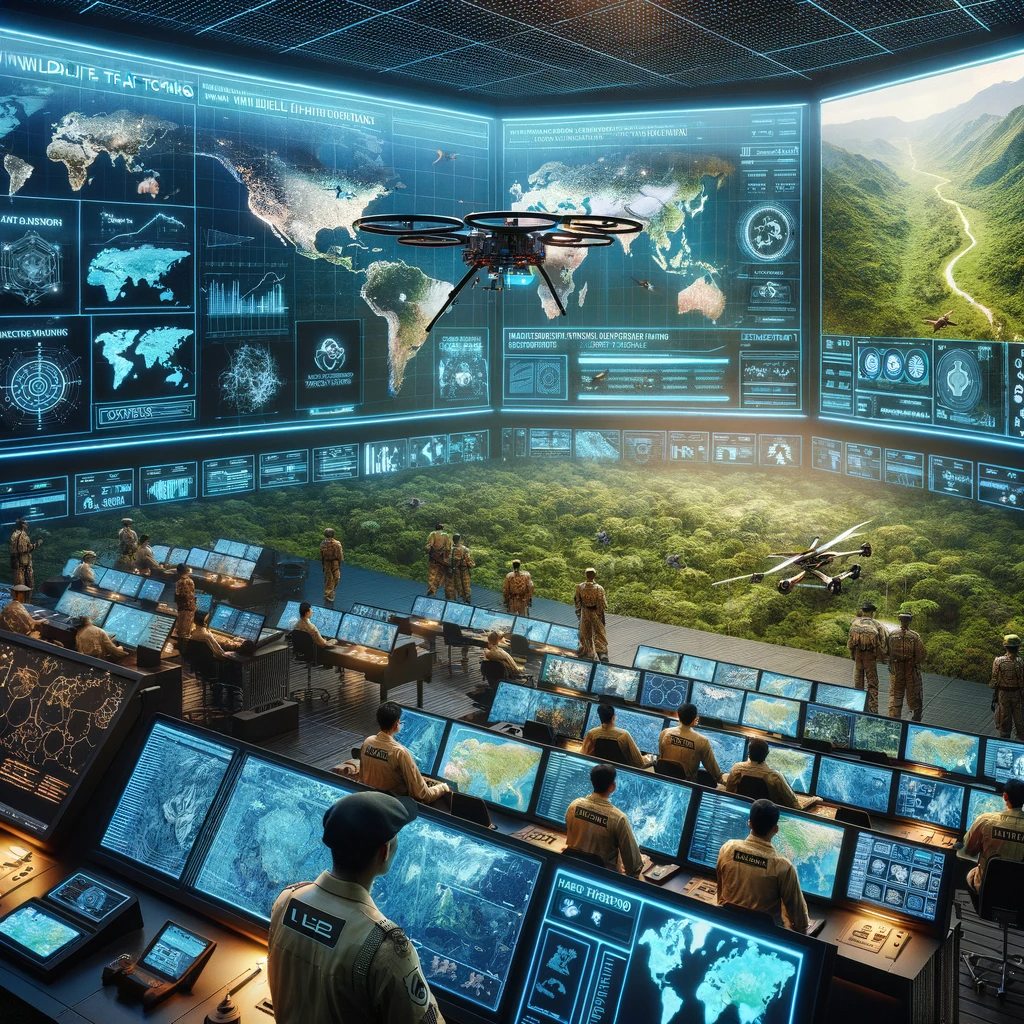The illegal wildlife trade is a multibillion-dollar criminal enterprise that threatens the survival of countless species and undermines global biodiversity efforts. Poaching and trafficking activities continue to endanger iconic wildlife like elephants, rhinos, and tigers, while lesser-known species suffer in silence. Wildlife trafficking not only pushes species toward extinction but also fuels organized crime and undermines the rule of law in many countries.
The urgency of combatting wildlife trafficking has prompted conservationists and law enforcement agencies to explore innovative solutions. Among these, Artificial Intelligence (AI) has emerged as a powerful tool with the potential to make a significant impact on detecting and preventing illegal wildlife trade. This article explores the multifaceted challenges posed by wildlife trafficking and the ways in which AI is revolutionizing conservation efforts.
The Wildlife Trafficking Crisis
Wildlife trafficking is a global crisis of staggering proportions. Each year, it claims the lives of millions of animals, threatening to push some species to the brink of extinction. Iconic creatures like elephants and rhinoceroses are hunted for their ivory and horns, while pangolins are trafficked for their scales. The demand for exotic pets, traditional medicines, and luxury goods made from wildlife products perpetuates this destructive trade.
Beyond the immediate loss of biodiversity, wildlife trafficking has profound ecological consequences. The disappearance of keystone species can disrupt entire ecosystems, leading to imbalances and further endangerment of other species. Additionally, the illicit wildlife trade often occurs in regions already plagued by political instability, corruption, and poverty, exacerbating existing challenges.

The Current Struggles in Combating Wildlife Trafficking
Efforts to combat wildlife trafficking have been hampered by a range of challenges. Poachers and traffickers are often well-organized, using sophisticated networks and tactics to evade authorities. Enforcement agencies struggle with limited resources and the vastness of the areas they must monitor. Moreover, traditional methods of surveillance and interception are often slow and reactive, allowing traffickers to exploit loopholes.
The clandestine nature of wildlife trafficking also makes it difficult to quantify and track. The true scale of the trade is elusive, making it challenging to allocate resources effectively. In many cases, by the time illegal shipments are intercepted, the damage has already been done, and countless animals have perished.
How AI Can Revolutionize Wildlife Trafficking Detection
Artificial Intelligence offers a ray of hope in the fight against wildlife trafficking. AI technologies, including machine learning, computer vision, and data analysis, have demonstrated their potential in addressing this complex issue. Unlike human counterparts, AI can tirelessly process vast datasets, identify patterns, and predict trafficking hotspots.
Machine learning algorithms can analyze historical trafficking data to identify trends and inform conservation efforts. Computer vision systems can be trained to recognize specific species, animal products, or poaching tools, allowing for real-time monitoring and detection. Additionally, AI-powered predictive models can help authorities allocate resources more efficiently and proactively respond to potential threats.
AI-Powered Solutions in Action
Numerous initiatives and projects around the world are already leveraging AI to combat wildlife trafficking. AI-powered drones equipped with cameras and sensors are being used to monitor protected areas and wildlife corridors. These drones can detect and alert authorities to suspicious activities, allowing for timely interventions.
Furthermore, AI is playing a crucial role in monitoring online marketplaces and social media platforms, where illegal wildlife products are often advertised and traded. AI algorithms can scan these platforms for keywords, images, and patterns associated with illegal wildlife trade, enabling law enforcement agencies and conservation organizations to identify and target offenders.
Ethical and Legal Considerations
While AI shows great promise in the battle against wildlife trafficking, it also raises ethical and legal questions. The use of AI for surveillance and monitoring, even in the pursuit of conservation, can implicate privacy concerns. Balancing the need to protect wildlife with the rights and privacy of individuals requires careful consideration and transparent guidelines.
Moreover, international regulations governing the use of AI in wildlife trafficking prevention are still evolving. The ethical use of AI in conservation must adhere to legal frameworks and ensure that efforts are transparent, accountable, and free from biases.

The Future of Wildlife Trafficking Prevention
As technology continues to advance, the future of wildlife trafficking prevention appears increasingly promising. Emerging technologies, partnerships between governments, non-governmental organizations, and tech companies, and a growing global awareness of the importance of conservation all contribute to the potential success of AI-powered solutions.
In conclusion, the illegal wildlife trade remains a formidable threat to global biodiversity and security. However, AI is proving to be a game-changer in the fight against wildlife trafficking. Its ability to analyze data, monitor remote areas, and detect illegal activities in real-time offers hope for a more proactive and effective approach to conservation. With continued innovation, collaboration, and ethical considerations, AI can play a pivotal role in preserving our planet’s precious wildlife for future generations.
